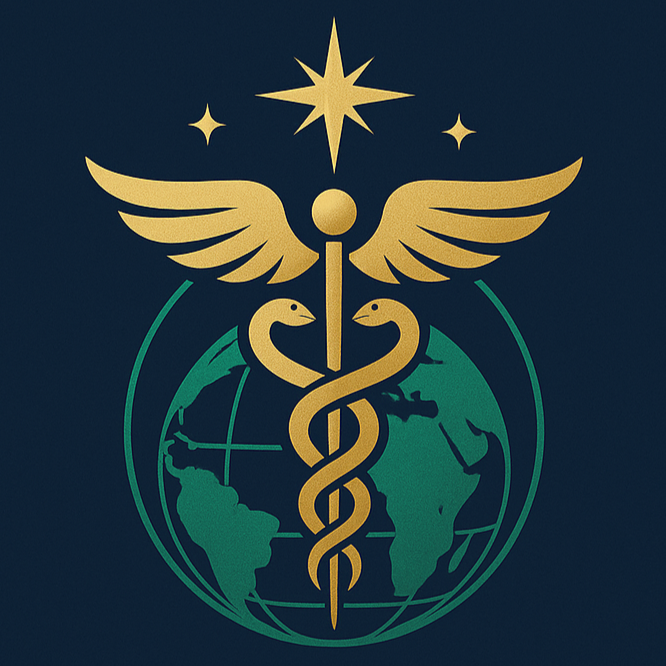Comparison of Biological Effects Between Proton and Heavy Ion Therapy 重粒子治療 VS 質子治療
Both heavy ion and proton radiation therapies are advanced forms of radiotherapy that aim to precisely target tumors while minimizing damage to surrounding healthy tissues. However, the type of particles used and their physical and biological properties differ significantly.
Proton Therapy
-
Bragg Peak (Energy Deposition Focus): Present, enabling precise energy concentration at the tumor site.
-
Relative Biological Effectiveness (RBE): Approximately 1.1 (similar to photon/X-ray radiation).
-
Effectiveness Against Hypoxic Tumors: Relatively weak.
-
Clinical Availability: More widely available worldwide.
-
Cost: Expensive (but generally less costly than heavy ion therapy).
-
Best Suited For: Small tumors located near critical organs (e.g., ocular tumors, brain tumors, pediatric cancers).
Heavy Ion Therapy (e.g., Carbon Ion Therapy)
-
Bragg Peak (Energy Deposition Focus): Sharper and more concentrated, allowing more accurate tumor cell destruction.
-
Relative Biological Effectiveness (RBE): 2 to 3 times higher than photons or protons, providing stronger tumor-killing power.
-
Effectiveness Against Hypoxic Tumors: Superior, capable of overcoming radioresistance.
-
Clinical Availability: High technical barrier; limited number of treatment centers worldwide.
-
Cost: More expensive than proton therapy.
-
Best Suited For: Hard-to-treat, highly malignant, or X-ray-resistant tumors (e.g., osteosarcoma, pancreatic cancer).
Mechanistic and Clinical Differences
In terms of biological effect, proton radiation shares a similar mechanism of cell damage with photon (X-ray) radiation. As a result, proton therapy typically requires multiple fractions to:
-
Allow normal tissues time to recover between sessions, thus minimizing side effects.
-
Promote tumor reoxygenation, which enhances tumor sensitivity to radiation and improves treatment outcomes.
The key advantage of proton therapy lies in its high precision. It is particularly beneficial for patients with tumors located near vital organs (especially non-head and neck cancers), where tight dose control can improve local tumor management.
In contrast, heavy ion therapy (such as carbon ion therapy) has a fundamentally different and more potent mechanism of cell destruction compared to photon therapy. It does not rely on tumor reoxygenation to increase radiation sensitivity, which significantly reduces the need for fractionated treatment. This allows for shorter treatment courses, a major benefit for patients with highly malignant or treatment-resistant cancers.
However, the powerful destructive capability of heavy ions may also reduce the normal tissues' ability to recover. Additionally, most centers currently use fixed-beam systems, which limit the range of optimal beam angles and treatment flexibility.
Thus, heavy ion therapy is best suited for aggressive, treatment-resistant, and X-ray-insensitive tumors, offering enhanced tumor-killing power through precise and intense energy delivery.
Key Takeaways:
-
Proton Therapy: Ideal for precision in treating tumors near critical structures; lower biological effect, but excellent tissue sparing.
-
Heavy Ion Therapy: Offers greater biological damage to tumors, shorter treatment times, and is preferable for aggressive or radioresistant cancers—though with higher cost and limited accessibility.
重粒子與質子放射都屬於先進放射治療技術,以「精準打擊腫瘤、減少周圍正常組織損傷」為目標,但使用的粒子種類與物理特性有所不同。
質子治療(Proton Therapy)
- 布拉格峰(能量集中處) 有,能精準集中在腫瘤處
- 生物效應(RBE) 約1.1(與X光相近)
- 對低氧腫瘤效果 較弱
- 臨床應用 普及程度較高
- 費用 昂貴(比重粒子便宜一些)
- 適合腫瘤 靠近重要器官的小型腫瘤(如眼部、腦部、兒童腫瘤)
重粒子治療(Heavy Ion Therapy,例如碳離子)
- 布拉格峰(能量集中處) 更尖銳集中,更準確殺死腫瘤
- 生物效應(RBE) 2–3倍以上(殺傷力更強)
- 對低氧腫瘤效果 較強,更能克服放射抗性
- 臨床應用 技術門檻高、全球設備少
- 費用 更昂貴
- 適合腫瘤 難治性、高惡性度、對X光不敏感的腫瘤(如骨肉瘤、胰臟癌)
從生物效應上比較,質子射線在殺死細胞的機轉和破壞力上與光子射線相近,需要透過較多次的分次治療,一方面讓治療範圍內的正常組織有喘息、修復的時間,以降低治療對正常組織的傷害,另一方面則透過分次治療過程中,腫瘤的「再氧化」來增加腫瘤對放射治療的敏感度以提升治療的效果。質子治療的優勢在於精準照射,在某些情況下(尤其是非頭頸癌或接近重要器官癌症的患者)可能在局部控制方面有優勢。因此,質子治療適合於靠近重要器官的小型腫瘤(如眼部、腦部、兒童腫瘤),可以做出精準的照射規劃。
而重粒子射線在殺死細胞的機轉上和光子射線大相逕庭,對腫瘤有更強大的破壞力,不需要透過分次治療過程中腫瘤的「再氧化」來增加腫瘤對放射治療的敏感度,多分次療程在重粒子治療的意義不大,使得重粒子治療的療程可以大幅縮短。這對於難治或惡性的腫瘤的病患帶來福音。須注意強大的破壞力可能使正常組織的修復效果大幅降低,且多數中心僅使用固定式射束機座系統,限制了照射角度的優化。因此,重粒子治療適合於難治性、高惡性度、對X光不敏感的腫瘤(如骨肉瘤、胰臟癌),以強大的破壞力打擊腫瘤細胞。
主要結論如下:
重粒子治療:
- 優勢:破壞力強大,可以大幅簡短放射療程
- 挑戰:特殊角度位置照射困難,可能損傷周圍正常組織
- 難治性、高惡性度、對X光不敏感的腫瘤(如骨肉瘤、胰臟癌)
質子治療:





